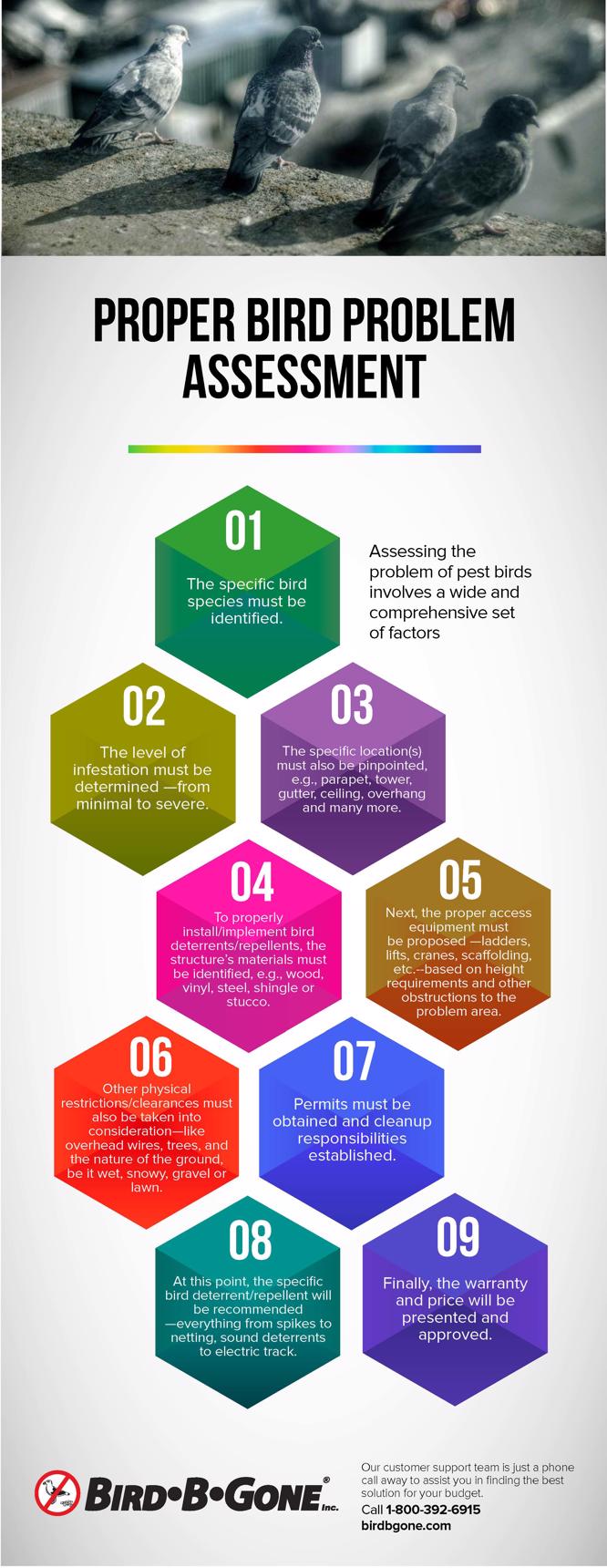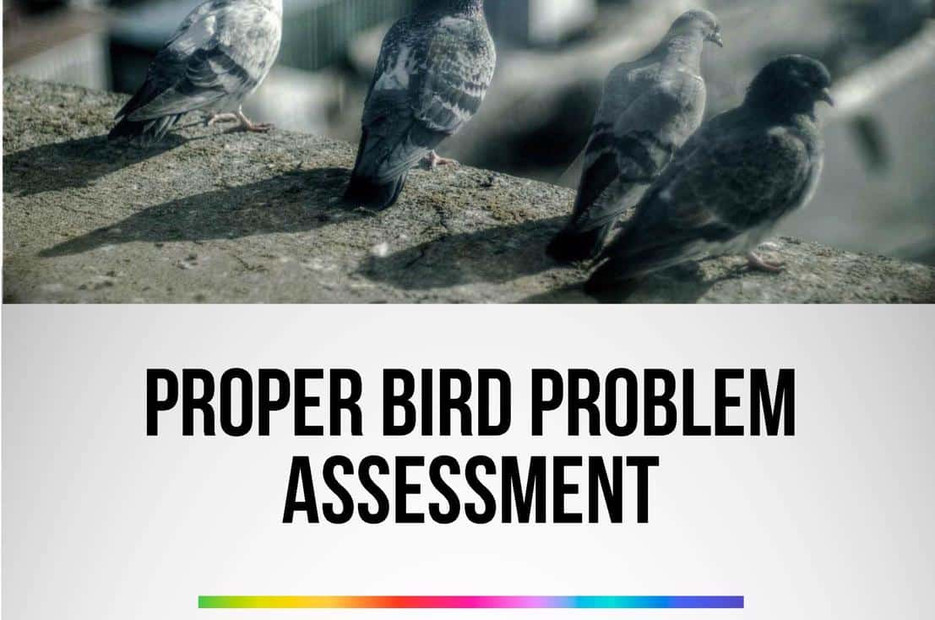Bird Problem Assessment - 9 Steps: For Proper Bird Control
Are You Thoroughly Assessing your Bird Control Problem?
Need a refresher, you’re in luck. Our Bird Control Experts have put together an easy-to-follow infographic guide, outlining 9 Key Steps you don’t want to skip out on when assessing your pest bird problem.
While you are at it, download our comprehensive Site Evaluation Form. This form is designed for professionals looking to assess commercial & residential properties. Our FREE Bird Control Site Evaluation Form takes into consideration all 9 Key Steps shown in the infographic below.
FREE DOWNLOAD: Bird Control Site Evaluation Form
Why leave it up to chance, make sure you, your team, and customers are aware of every possibility. Take things into your own hands and get it right the first time!

9 Key Points When Assessing A Bird Problem:
- Identifying the bird species. Identifying the bird species will determine what you can and cannot do. The actions and deterrents you choose will vary if the bird is a protected or non-protected species. Some deterrents are not only designed for specific species but the physical size of the bird.
- Infestation Level / Flock / Population Size. The Infestation level usually refers to the flock or population size, which is important to understand. The larger the flock size generally means the severity of the problem increases. Infestation levels can allude to the activity of the birds such as nesting, loafing, roosting, and perching. Your occasional bird perching on a fence may not require as drastic a solution as a flock of nesting pigeons on a property. Identify the difference before moving on.
- Location of the Birds. Pinpoint the location the birds are infesting. It is common to identify multiple locations on the property. Notate these locations as it will be a deciding factor when selecting alternative deterrents. Finding the right bird control product by area can be a little tricky at first but the more experience you and your team gain the easier this process will become.
- Identify Structural Material. This alludes to the material the structure is made of. Why is this important? It allows you to identify the recommended installation method. The most common examples are the installation of bird spikes and netting onto surfaces such as wood, concrete, plastic, steel, sheet metal, masonry, stucco, and more.
- Access Equipment Needed. Evaluating the site properly will allow you to identify the access equipment. Equipment such as ladders, lifts, cranes, and scaffolding are common when installing bird control. Choosing the safest option will not only protect your crew but will also improve the outcome of your work.
- Identifying Restrictions. Recognize any restrictions that may halt or delay your project. Physical restrictions and clearances must be taken into consideration such as overhead wires, trees, and the ground you are working on.
- Obtain Work Permits. You may come into projects requiring certain permits such as public access or even working on historical buildings. Permits must be obtained before your project start date and cleanup responsibilities should be established.
- Choosing the Correct Bird Deterrents. The previous 7 key points will help identify the correct bird deterrents to use. It will also help provide alternative solutions if the primary deterrent is not accepted. Methods such as exclusion, ledge protection, sensory deterrents can now be introduced to your customer. You can utilize your Site Evaluation to explain the importance of the methods proposed and why others were not.
- Present your Proposal. Finally, present your final proposal including warranty and pricing. Your Site Evaluation will help break down your price estimate, which will include labor time, travel expenses, equipment rentals, material cost, and other miscellaneous items.
Need Help? Ask An Expert from Bird B Gone
Our bird control experts are just a phone call away to assist you in finding the best possible solution for your budget. Call our Technical Support Team at 1-800-392-6915 to Ask an Expert.

